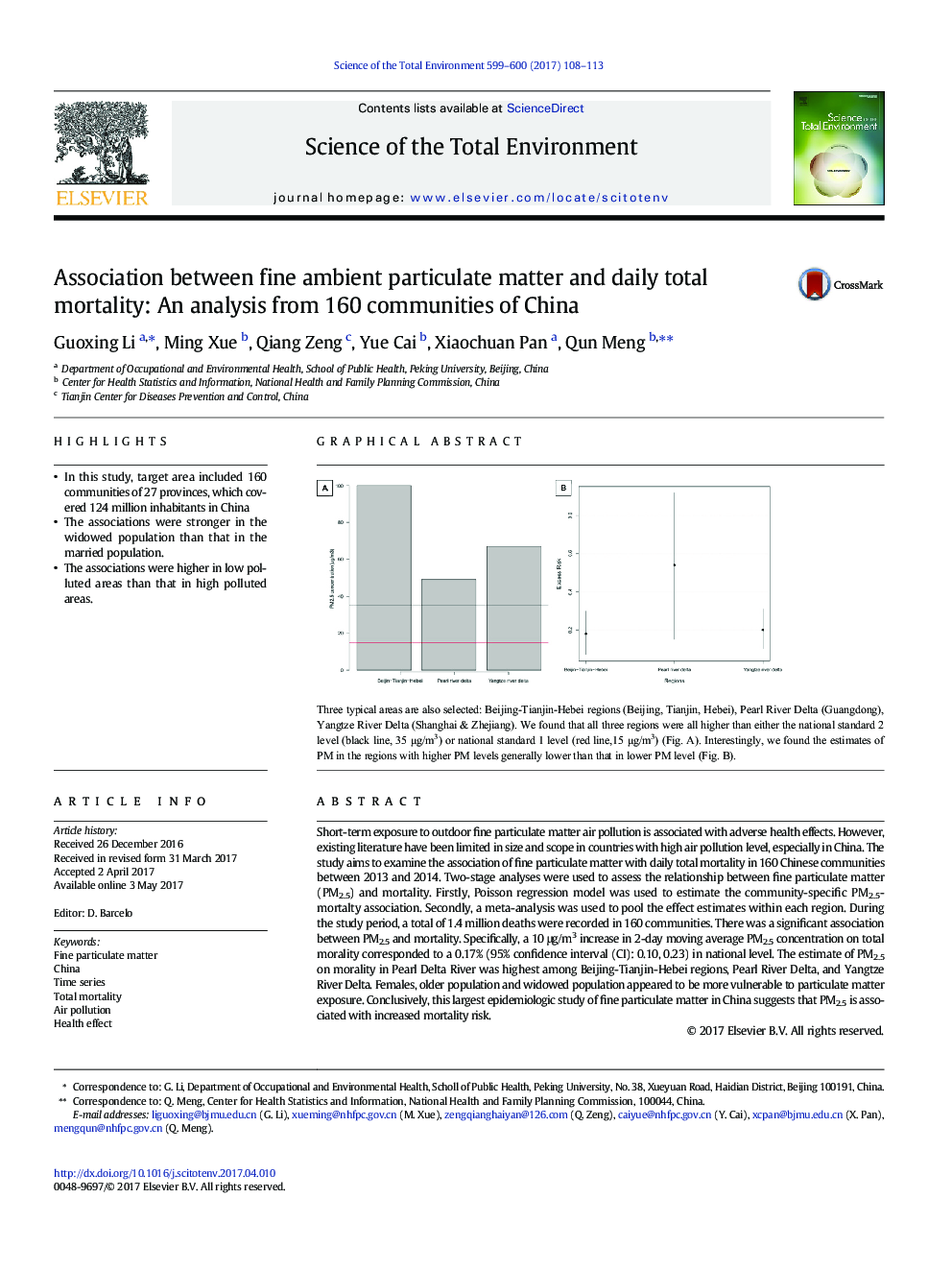| Article ID | Journal | Published Year | Pages | File Type |
|---|---|---|---|---|
| 5750475 | Science of The Total Environment | 2017 | 6 Pages |
â¢In this study, target area included 160 communities of 27 provinces, which covered 124 million inhabitants in Chinaâ¢The associations were stronger in the widowed population than that in the married population.â¢The associations were higher in low polluted areas than that in high polluted areas.
Short-term exposure to outdoor fine particulate matter air pollution is associated with adverse health effects. However, existing literature have been limited in size and scope in countries with high air pollution level, especially in China. The study aims to examine the association of fine particulate matter with daily total mortality in 160 Chinese communities between 2013 and 2014. Two-stage analyses were used to assess the relationship between fine particulate matter (PM2.5) and mortality. Firstly, Poisson regression model was used to estimate the community-specific PM2.5-mortalty association. Secondly, a meta-analysis was used to pool the effect estimates within each region. During the study period, a total of 1.4 million deaths were recorded in 160 communities. There was a significant association between PM2.5 and mortality. Specifically, a 10 μg/m3 increase in 2-day moving average PM2.5 concentration on total morality corresponded to a 0.17% (95% confidence interval (CI): 0.10, 0.23) in national level. The estimate of PM2.5 on morality in Pearl Delta River was highest among Beijing-Tianjin-Hebei regions, Pearl River Delta, and Yangtze River Delta. Females, older population and widowed population appeared to be more vulnerable to particulate matter exposure. Conclusively, this largest epidemiologic study of fine particulate matter in China suggests that PM2.5 is associated with increased mortality risk.
Graphical abstractDownload high-res image (74KB)Download full-size imageThree typical areas are also selected: Beijing-Tianjin-Hebei regions (Beijing, Tianjin, Hebei), Pearl River Delta (Guangdong), Yangtze River Delta (Shanghai & Zhejiang). We found that all three regions were all higher than either the national standard 2 level (black line, 35 μg/m3) or national standard 1 level (red line,15 μg/m3) (Fig. A). Interestingly, we found the estimates of PM in the regions with higher PM levels generally lower than that in lower PM level (Fig. B).
